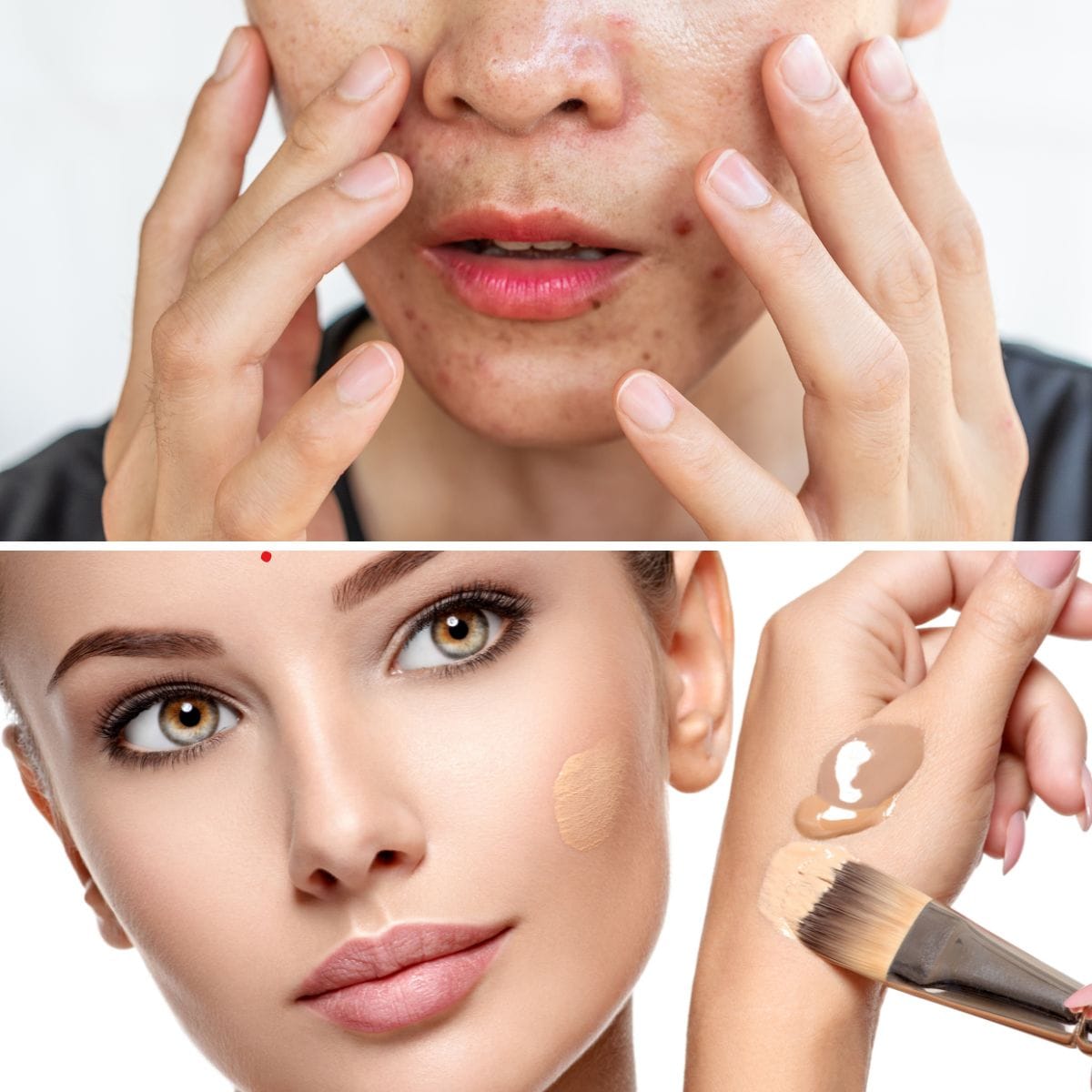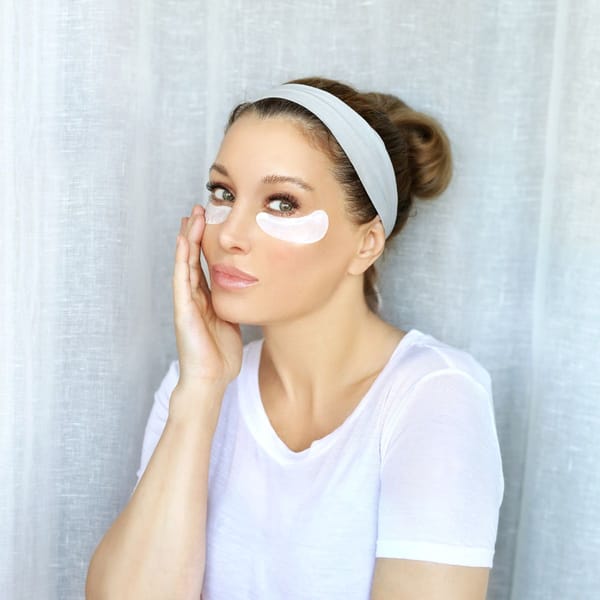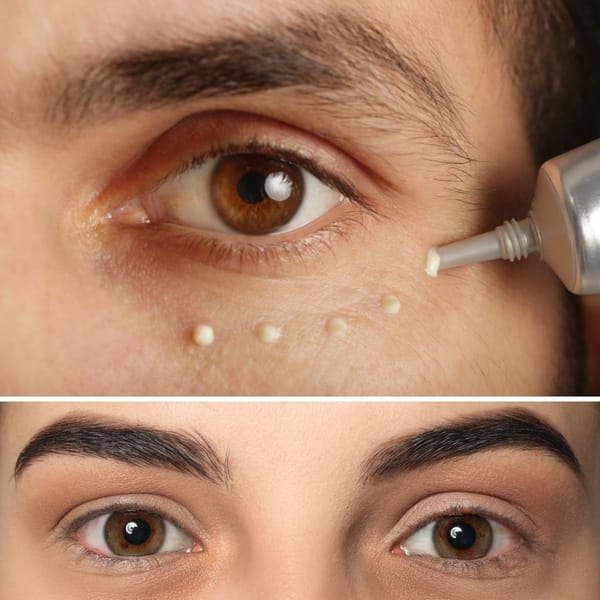Choosing the right foundation for oily skin can be a daunting task. With the plethora of options available, it's easy to feel overwhelmed. However, with the right knowledge and a bit of guidance, you can find the perfect match for your skin type that will leave you with a shine-free complexion and confidence throughout the day.
Key Takeaways:
- Understand your skin type and the ingredients that work best for oily skin.
- Learn how to test foundations to find the perfect shade and formula.
- Discover the best practices for applying foundation to maintain a matte finish.
Understanding Oily Skin and Foundation Needs
Oily skin is characterized by excess sebum production, which can lead to a shiny complexion and makeup that doesn't stay put. When looking for a foundation for oily skin, it's essential to choose products that are designed to control excess oil and provide a matte finish without clogging pores.
The Importance of Ingredients
Makeup artists recommend oil-free foundations for oily skin, as they are less likely to contribute to more oil production. Ingredients like salicylic acid can help manage acne-prone skin, while hyaluronic acid provides hydration without adding oiliness. Look for non-comedogenic labels to ensure the product won't clog pores.
Identifying Your Skin Tone and Undertones
To choose the right foundation shade, it's crucial to understand your skin tone and whether you have warm, cool, or neutral undertones. This will help you find a foundation that blends seamlessly with your natural skin color, avoiding an uneven texture or an unnatural appearance.
Testing Foundations: A Step-by-Step Guide
When testing foundations, always do a patch test on your jawline in natural light. This will give you the most accurate representation of how the foundation will look on your skin. Remember that the right shade should disappear into your skin without leaving any lines of demarcation.
Powder Foundations vs. Liquid Foundations
Powder foundations are often the best bet for oily skin as they absorb excess oil and maintain a matte finish. However, liquid foundations with a matte or demi-matte finish can also work well if they are formulated for oily skin types. It's all about finding the right formula that works for you.
Full Coverage or Sheer Coverage?
The coverage levels you choose depend on your personal preference and skin needs. Full coverage foundation can conceal blemishes and provide a flawless finish, while sheer coverage offers a more natural look. Medium coverage can be a happy medium, offering buildable coverage without feeling too heavy.
The Role of Setting Powder
A setting powder is essential in a makeup routine for oily skin. It helps to set the foundation, providing a soft matte finish and controlling shine throughout the day. Always choose a translucent setting powder to avoid altering the color of your foundation. Blending Techniques for a Flawless Finish When it comes to achieving a flawless finish with your foundation, especially for those with oily skin, blending techniques are paramount. Using the right tools, such as a beauty sponge or a stippling brush, can make all the difference. A beauty sponge absorbs excess oil and provides a smooth, natural-looking matte finish, while a stippling brush can help to lightly layer the product for a soft matte finish without clogging pores. Remember, the goal is to blend the foundation seamlessly into your skin to avoid any harsh lines or uneven texture.
Makeup artists often emphasize the importance of building coverage gradually. Start with a small amount of your oil-free foundation and add more as needed. This approach allows for more control over the final look, whether you're aiming for sheer coverage or full coverage. For those with acne-prone skin, a medium coverage foundation that can be built up in areas with more oil or large pores is often the best bet. The key is to work in thin layers and use a patting motion to press the foundation into the skin, which helps to absorb excess oil and achieve a long-wearing, shine-free complexion.
The Benefits of Primer for Oily Skin Types Primer is a game-changer for individuals with oily skin, as it can significantly extend the wear of your foundation. A good primer creates a barrier between the skin and makeup, helping to control excess oil production throughout the day. Look for primers that are non-comedogenic and contain ingredients like salicylic acid, which can help to manage excess sebum and provide a smooth canvas for applying foundation. A primer with a natural matte finish can also minimize the appearance of large pores and prevent your makeup from sliding off oily areas.
In addition to helping your foundation last longer, primers can also improve the overall look of your makeup. They can provide a demi-matte finish that blurs imperfections and evens out skin tone without adding unwanted shine. For those with combination skin, consider using a mattifying primer in the T-zone and a hydrating primer with hyaluronic acid on drier areas to achieve a balanced, natural finish. By incorporating a primer into your makeup routine, you're setting the stage for a perfect foundation application that stays put and looks fresh all day long.
Long-Wearing Formulas for All-Day Matte
For those with oily skin, long-wearing, oil-absorbing foundations are a must. They help to keep your makeup in place and maintain a matte finish, even in oily areas like the T-zone. Look for foundations that promise extended wear to ensure your makeup stays fresh.
The Best Foundations for Combination Skin
If you have combination skin, with both oily and dry areas, you'll need a foundation that can address both concerns. Look for a formula that offers a natural matte finish that won't dry out the skin while still controlling oil in the T-zone.
Water-Based Formulas: A Good Choice?
Water-based formulas can be a great option for oily skin as they are lightweight and less likely to contribute to excess oil production. They can provide a natural finish that feels comfortable on the skin and is easy to apply.
The Impact of Skin Texture on Foundation Choice
Skin texture, such as the presence of large pores or an uneven surface, can affect how foundation sits on your skin. Look for foundations that promise a smooth application and have pore-minimizing properties to achieve a more even, flawless finish.
Makeup Artists' Tips for a Shine-Free Complexion
Makeup artists often have tricks up their sleeves for maintaining a shine-free complexion. One tip is to use a primer specifically designed for oily skin before applying foundation. This can help to control oil production and create a smooth canvas for your makeup.
The Best Foundation Types for Mature Skin
Mature skin may have different needs, such as the desire for a foundation that offers a natural-looking matte finish without settling into fine lines. Products with buildable coverage and skin-care benefits like antioxidants or peptides may be particularly beneficial.
How to Control Excess Oil Throughout the Day
Even with the right foundation, you may need to manage excess oil throughout the day. Blotting papers can be a discreet and effective way to absorb unwanted shine without disturbing your makeup.
Finding Your Perfect Match: The Final Step
Ultimately, finding the perfect foundation for oily skin is about trial and error. Don't be afraid to ask for samples or consult with a beauty industry professional to help you find the right foundation type for your skin's unique needs.
Summary
Choosing the right foundation for oily skin involves understanding your skin type, testing different formulas, and considering the finish and coverage you desire. By selecting oil-free, non-comedogenic products with the right ingredients, you can achieve a long-lasting, matte finish that looks natural and feels comfortable. Remember to incorporate a setting powder and consider your skin's texture and tone when making your selection.
FAQ Section
Q: Can I use a dewy or satin finish foundation if I have oily skin? A: While matte foundations are typically recommended for oily skin, some people may prefer a dewy or satin finish. If you choose to go this route, look for a formula that is still oil-free and consider using a mattifying primer or setting powder to control excess shine.
Q: How often should I test foundations to find the right one? A: You should test foundations as often as necessary until you find the perfect match. Skin can change with seasons, age, and other factors, so it's important to reassess your foundation choice periodically.
Q: What's the best way to apply foundation for oily skin? A: For oily skin, it's best to start with a primer, then apply your foundation with a brush or sponge for an even, smooth application. Set your foundation with a translucent powder to absorb excess oil and keep your makeup in place.







